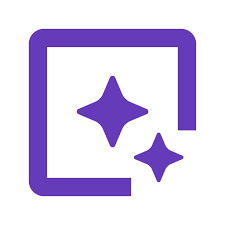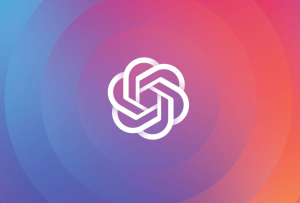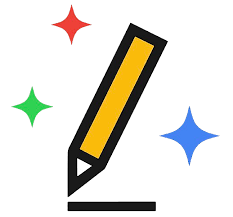Artificial Intelligence (AI) is rapidly transforming creative industries, and the world of visual art is no exception. What was once considered a purely human endeavor—drawing and sketching—has now embraced AI as a powerful tool to enhance creativity, speed up workflows, and spark new ideas. Whether you’re a professional illustrator, a digital artist, or someone just exploring art, AI tools can revolutionize the way you approach sketching.
In this article, we’ll explore how artists use AI for drawing and sketch ideas, the best tools available, and why embracing AI doesn’t mean replacing creativity—it means unlocking it.
Why Use AI in Art and Sketching?
AI is not here to take away the soul of art. Instead, it serves as a creative assistant—helping artists overcome creative blocks, try new styles, and bring concepts to life faster than ever before.
Benefits of Using AI for Sketching:
-
Idea generation: AI can suggest new poses, scenes, and character concepts.
-
Style transfer: Artists can reimagine their sketches in different artistic styles.
-
Speed: AI reduces time spent on repetitive or rough draft tasks.
-
Inspiration: AI art generators can present visuals that trigger creative thinking.
Popular AI Tools Artists Use for Sketching and Drawing Ideas
Below are some of the most widely used and powerful AI tools that assist artists:
1. Midjourney
Midjourney is one of the most popular AI image generators among artists. It runs through Discord and produces high-quality, imaginative images based on text prompts.
Use Case for Artists:
Artists often describe a concept or scene using prompts (e.g., “cyberpunk cityscape at night, pencil sketch style”) to get visual inspiration for character design, background art, or composition layout.
2. DALL·E by OpenAI
DALL·E is another AI art tool that generates images from text prompts. Its newer versions allow inpainting, outpainting, and editing existing images, making it great for refining sketches.
Use Case for Artists:
Use it to generate concept thumbnails or variations of your drawing ideas. It’s especially useful for quick visualization during brainstorming sessions.


3. DeepArt and DeepDream
These tools use neural networks to apply artistic styles to images or generate psychedelic visuals.
Use Case for Artists:
Artists upload a basic sketch and transform it into the style of Picasso, Van Gogh, or a custom aesthetic. This is a great way to experiment with visual diversity.
4. AutoDraw by Google
AutoDraw uses machine learning to guess what you’re trying to draw and suggests cleaner vector versions of it.
Use Case for Artists:
Beginners and digital sketchers can use it for clean outlines or icons. It’s simple, fast, and ideal for rough ideas or logo sketches.
5. Procreate’s AI-Enhanced Features
While not strictly an AI tool, Procreate incorporates AI-like features such as predictive stroke smoothing, texture recognition, and gesture controls.
Use Case for Artists:
These subtle AI integrations streamline drawing workflows and help refine rough sketches without interrupting the creative process.
How Artists Integrate AI into Their Creative Workflow
1. Starting with a Prompt
Many artists begin by writing descriptive prompts into an AI tool. For example, “a fantasy knight standing on a cliff, stormy sky, pencil sketch style.” The AI generates several visuals, offering a base to sketch from or expand upon.
2. Reference Material and Mood Boards
AI can create quick reference images in various lighting, styles, and poses. Instead of spending hours searching for inspiration, artists can generate tailor-made references in minutes.
3. Thumbnail Sketching and Composition
AI tools like DALL·E and Midjourney are often used to create thumbnail versions of potential scenes or character arrangements. These “idea sketches” serve as templates for more detailed hand-drawn work.
4. Exploring New Styles
Want to know how your sketch would look in manga, noir, or steampunk style? Style transfer AI tools can transform a basic drawing into multiple artistic interpretations. This allows artists to explore directions they might not have thought of on their own.
5. Time-Saving Techniques
Repetitive tasks like shading, line cleaning, or background creation can be handled with AI, allowing the artist to focus on the core creative aspects of the piece.
Real-World Examples of AI in Art
-
Comic book artists use AI to mock up storyboards or generate dramatic lighting before inking.
-
Concept artists use AI to generate multiple outfit or weapon designs for characters in seconds.
-
Interior designers sketch rough room layouts and use AI to render them in realistic styles.
-
Tattoo artists use AI tools to turn a rough client sketch into a refined stencil-ready design.
Tips for Artists Using AI
1. Use AI for Exploration, Not Execution
The best use of AI in art is for exploration—not replacing the artist’s hand. Use AI to suggest compositions, colors, or forms. Then refine or redraw them in your own style.
2. Keep Your Prompts Clear and Creative
AI responds well to descriptive prompts. The more specific your input, the more unique and useful the output.
3. Combine Traditional and AI Techniques
Start with a hand-drawn sketch, feed it into an AI tool, and experiment with enhancements or variants. This hybrid approach retains authenticity while benefiting from AI efficiency.
4. Avoid Over-Reliance
It’s easy to become dependent on AI for ideas. Remember, AI lacks imagination—it recombines what it has learned. Use it as a collaborator, not a crutch.
Ethical Considerations
As with all AI-related innovations, ethical use is crucial. Artists must be careful not to use AI-generated outputs that closely resemble copyrighted work or someone else’s art style without permission. Many artists also watermark or label AI-assisted pieces to maintain transparency.
Final Thoughts
AI is redefining the creative process in exciting ways. It’s not here to replace artists—it’s here to empower them. From generating new sketch ideas to speeding up iterations and experimenting with styles, AI is becoming an essential part of modern artistic workflows.
Whether you’re a digital artist, comic book illustrator, or hobbyist sketcher, incorporating AI tools into your process can open up endless possibilities. Just remember: the heart of your art is still you. AI simply gives your imagination wings.


